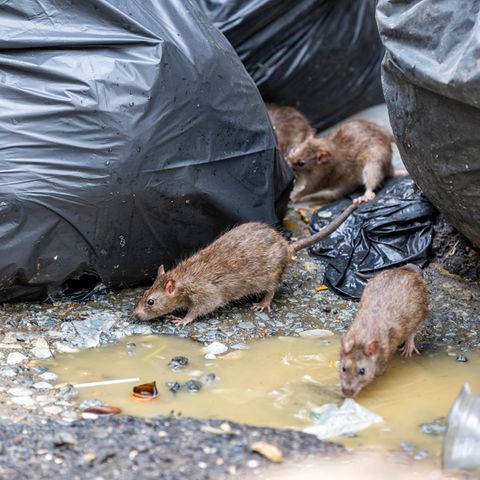While the prime ministers are talking to the chancellor about limiting asylum immigration, the development minister is traveling to a Syrian refugee camp – in the middle of the Jordanian desert.
Founded in July 2012 as a tent camp for a few dozen refugees from civil war-torn Syria, Saatari has developed into a container city in which around 80,000 people now live. This means that the refugee camp, which has become a permanent temporary facility, has about as many inhabitants as the city of Bamberg. There is currently no prospect of a return for the approximately 1.3 million Syrians who fled torture and war to Jordan.
Using her crutches, Howeida al-Jakub hobbles along the dusty paths between the living containers. The 40-year-old has lived with her husband and three children in Saatari, the largest refugee camp for Syrians, since 2013. Germany has built a large solar system here. The children go to school. The situation is even worse in Lebanon, where many Syrian refugee children do not attend school. From the perspective of German development aid, Saatari is overall a place where a lot of things have been done right.
But Howeida al-Jakub’s family still wants to leave here. Europe is their dream. Twelve-year-old daughter Bisan, who likes to play soccer during school holidays, dreams of one day becoming a doctor. Her mother, who has cancer, is hoping for a modern prosthesis. Her leg had to be amputated in 2018. Since then, she has relied heavily on her husband, Tarek al-Hawandah, who is three years her junior, in everyday life. In Syria, where he lived in a tiny house with his family, he worked as a day laborer. Now the five of them live in 15 square meters.
Most refugees go to neighboring countries
In Germany, when people talk about the burden on municipalities caused by accepting refugees, it is often forgotten that three quarters of all refugees worldwide are taken in in neighboring countries, says Federal Development Minister Svenja Schulze. She speaks to a young family in one of the living containers. Actually, your delegation has to move on, that’s what the program says. But Howeida al-Jakub is able to convince the SPD politician to take a quick look at the handicrafts that she and the other women have made in an air-conditioned container: embroidered pillowcases, bags, dolls with hair made from woolen threads.
Jordan, which welcomed hundreds of thousands of Palestinian refugees after the Middle East wars of 1948 and 1967, suffers from water shortages and has an unemployment rate of more than 22 percent. This is also why King Abdullah II reacted negatively to speculation about the possible admission of further refugees from the Palestinian territories. The fact that violent attacks by radical Jewish settlers on Palestinians in the West Bank have increased following the Hamas bloodbath in Israel on October 7th is also being observed with great concern in neighboring Jordan.
Only the poorest of the poor
Only the poorest of the poor among the refugees live in Saatari. 81 percent of the Syrian refugees that Jordan has taken in are keeping themselves afloat with jobs. In the capital you can often see children begging at intersections.
Due to the many crises worldwide, the money that remains to care for refugees in Jordan has recently become less and less, reports Roland Schönbauer from the UN Refugee Agency (UNHCR). As a result, desperation is growing and more and more people are trying to somehow get to Europe, often by smuggling boats across the Mediterranean. From Jordan the route often leads via Egypt to Libya. The young people know that they are risking their lives on the Mediterranean, so it is important that they do not end up in a situation where they think “now I don’t care, I’ll risk it.”
Tarek al-Hawandah has a brother who made it to the UK from Syria. He says he is doing much better there than he was here in the refugee camp. But the family reunification didn’t work out as expected for the brother. His wife and children had been waiting for an opportunity to follow him for more than three years.
About 350 people from Saatari go back to Syria every month, says the UNHCR spokesman. We rarely find out what becomes of them. That’s not an option for Al-Hawandah, he says. “My house is destroyed, I would have to go to the army and there wouldn’t be a prosthesis for my wife there either.”
Source: Stern
I have been working in the news industry for over 6 years, first as a reporter and now as an editor. I have covered politics extensively, and my work has appeared in major newspapers and online news outlets around the world. In addition to my writing, I also contribute regularly to 24 Hours World.




